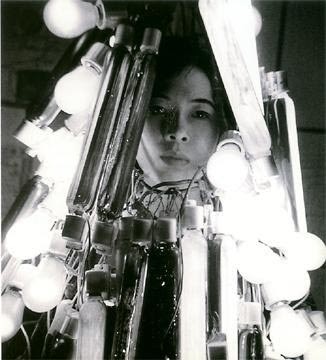COLLECTIONS
The National Museum of Modern Art (Tokyo) / The Ashiya City Museum of Art & History / Museum of Contemporary Art (Tokyo) / Hyogo Prefectural Museum of Art (Hyogo, Japan), etc.



Atsuko Tanaka joined the Gutai Art Association in 1955. One of Tanaka’s most famous works is her Electric Dress, which she created in 1956. The dress, made up of light bulbs coloured with synthetic enamel paints, was presented as part of the Gutai Art on Stage (1956) exhibition. Influenced by the radical ideas of the Gutai group, Tanaka’s work embodied a spirit of experimentation and innovation. Tanaka explored various mediums during her career, including painting, sculpture, installation, and performance art. She was known for her experimental work with nonphysical materials, such as light, sound and time, which garnered significant attention during the mid-1950s. For example, Tanaka used vibrant vinyl paints to create captivating compositions of interwoven circles and lines. Using glossy materials and vivid colours, Tanaka gained recognition from art critic Michel Tapié and achieved an international reputation as one of the leading artists of the early days of Gutai, alongside Kazuo Shiraga and Sadamasa Motonaga.
COLLECTIONS
The National Museum of Modern Art (Tokyo) / The Ashiya City Museum of Art & History / Museum of Contemporary Art (Tokyo) / Hyogo Prefectural Museum of Art (Hyogo, Japan), etc.
Get exclusive access to the newest exhibition information and member-only events available only to newsletter subscribers.
After submitting your email address, you will receive a confirmation email. Please click on the link in the email to complete your registration.